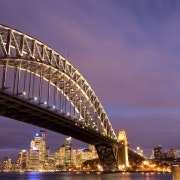Sydney City's push for renewables renown
Allan Jones, the chief development officer of Energy and Climate Change for Sydney, intends to have the city rely entirely on renewable energy sources for power, heating, cooling, and transport.
Jones, formerly the head of the UK’s climate program, was recently interviewed by the Renewables 100 Policy Institute. He commented on the ambitious nature of this program, as shown in this video, followed by some text summary in the following sections.
Renewable energy sources for more than power
Very importantly, the initiative is to provide not only power, but also heating and cooling, using only renewable energy.
Jones intends to have conventional renewables (wind and solar) generate 30 per cent of the city’s electricity, with the other 70 per cent coming from trigeneration (using biomass-fueled generators). Trigeneration, or combined heat, power and cooling (CHPC) is a process in which a plant generates electricity and then uses the waste heat it produces to provide heating and cooling. The heat is used to power absorption refrigerators to provide a cooling effect.
The thought of heat-powered air conditioning sounds nice, doesn’t it?
It’s local!
Part of the plan is to use only local renewable energy, in order to avoid transmission losses and to avoid the storm damage risk that accompanies overhead electricity transmission lines. As Diane Moss, the founding director of the Renewables 100 Policy Institute, said:
To overcome this issue, land just outside the city will be used to generate some of the renewable energy.
Why 100 per cent?
According to Jones, the ultimate long-term goal is to transition to renewable energy. Setting a clear and complete goal to do so, instead of just obtaining a little renewable energy here and there from a few projects, is important to them. Copenhagen is one of the few renewable energy cities Jones cited as a leading example that Sydney is looking up to.
This project will be funded primarily by the private sector. The city will fund the gas distribution line, which accounts for 10 per cent of the budget.
Originally published on CleanTechnica. Republished with permission.
















